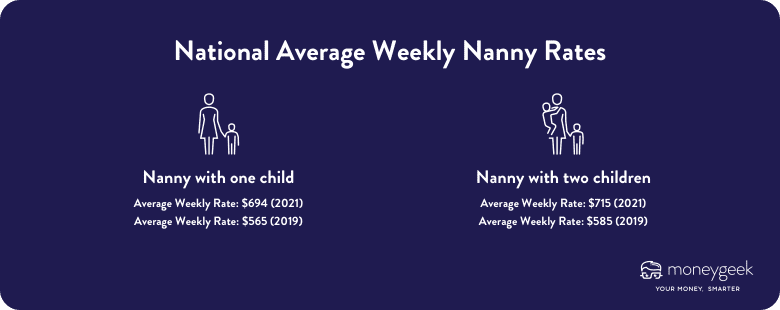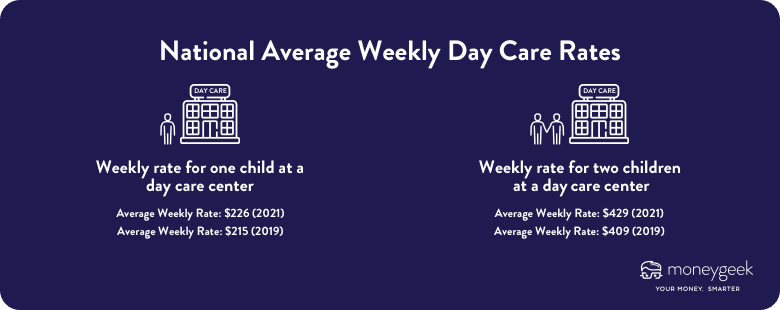The cost of child care has increased over the years. ChildCare Aware of America's (CCAoA) recent 2022 report found that families spend an average of $10,273 annually for child care. It exceeds other household expenses, such as housing, transportation and food, in three of the four regions CCAoA included in their study.
Child care has increased over the last few years. According to Care.com, single-child families paid $694 per week for a nanny in 2021. Two years before that in 2019, a nanny cost them $565. The change in day care rates is considerably less impactful. They charge an average of $11 more per week in 2021 than in 2019.
Keep in mind that these figures vary depending on your location, child care provider and the provider’s experience level.




















